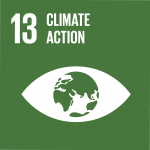The coastal area of Havana prepares to adapt to climate change
December 2022 - More than 700,000 inhabitants of the communities in the coastal zone of Havana will have an adaptation plan to the challenges arising from climate change, which will make it possible to identify the specific risks and vulnerabilities of each sector and population group, as well as to integrate protection measures. adaptation and investment decisions in the development planning process.
With the participation of the main national and local entities involved, the project will affect the areas from Bajos de Santa Ana in the Playa municipality to Rincón de Guanabo in the Habana del Este municipality, including 6 coastal municipalities (Playa, Plaza de la Revolution, Havana Center, Old Havana, Regla, Eastern Havana.
The project aims to contribute to closing gaps that currently inhibit the development of comprehensive climate change risk and vulnerability analyses, as well as the corresponding formulation of viable proactive solutions that can be coherently integrated into existing development plans.
Through these objectives, the inhabitants of that area give priority to vulnerable groups and women, decision-makers of the Government of Havana and its six municipalities, as well as the priority sectors at the participating provincial and municipal levels; They will be able to count on a favorable environment to remove existing barriers and promote adaptation planning.
With 47 km in length, 37 percent of the population of the main city of Cuba lives near the sea, cultivating its natural, aesthetic, cultural, social and economic heritage for the sustainable development of both Havana and Cuba. The area is particularly vulnerable to sea level rise and extreme weather events.
The Adaptation Plan initiative has the support of the Green Climate Fund (GCF), and is implemented by UNDP in Cuba in partnership with the Environment Agency (AMA) of the Ministry of Science, Technology and the Environment. Environment (CITMA), has an implementation period of 4.5 years and will have financing of USD 3.0 million.
In a workshop to begin this December 1, Tatiana Viera, coordinator of objectives and programs of the government of Havana, highlighted the value of the project for the city, within the framework of multiple actions that are carried out for adaptation to climate change and attention of vulnerable areas, as well as the innovative drive that their development can generate.
The first deputy minister of CITMA, José Fidel Santana, pointed out that the formulation of the Adaptation Plan for the Coastal Zone of Havana constitutes an opportunity to materialize the priorities contained in the Life Task, create synergy and complement the analyzes and results of the Third National Communication of the Framework Convention of Nations for Climate Change.
Fernando Hilraldo, UNDP resident representative in Cuba, highlighted that this innovative nature is based on promoting a comprehensive approach to adaptation and disaster risk reduction, which provides an integrated assessment of current and future risks, for the identification and prioritization of adaptation measures to implement. This allows the articulation of already existing mechanisms and solutions, such as the Articulated Platform for Local Development- PADIT- and the environmental information system, managed from INFOGEO.
Click here to learn more about the GCF-funded project 'Supporting Cuba to advance their NAP process'.
Read the original news release in Spanish on the UNDP Cuba website here.


